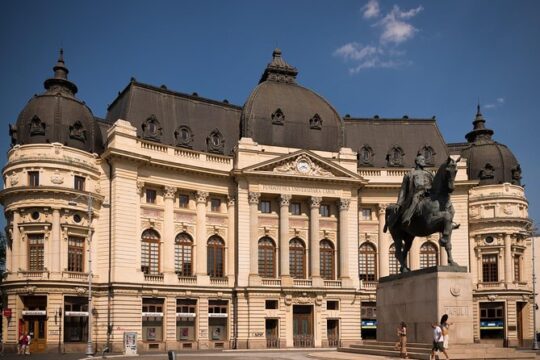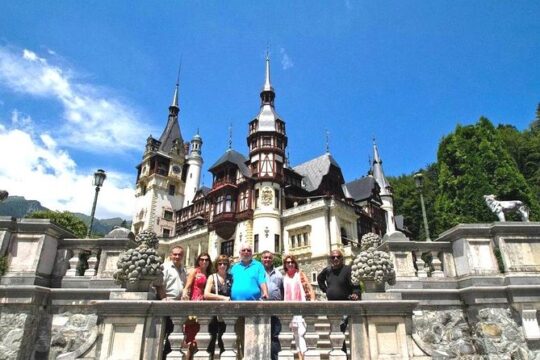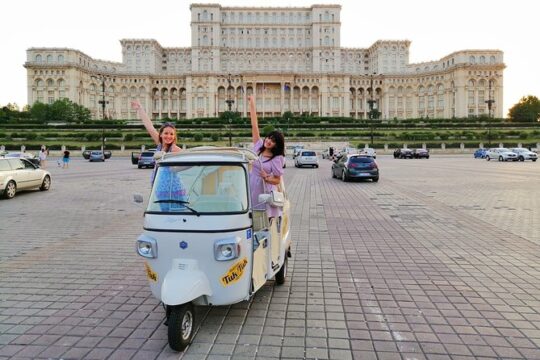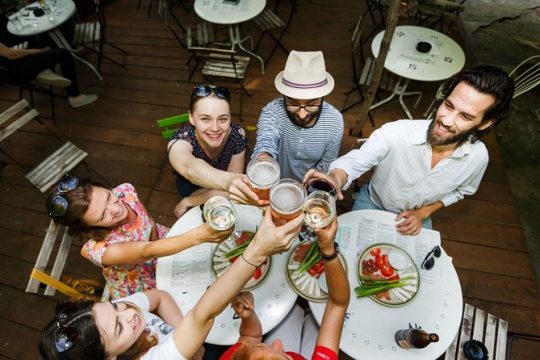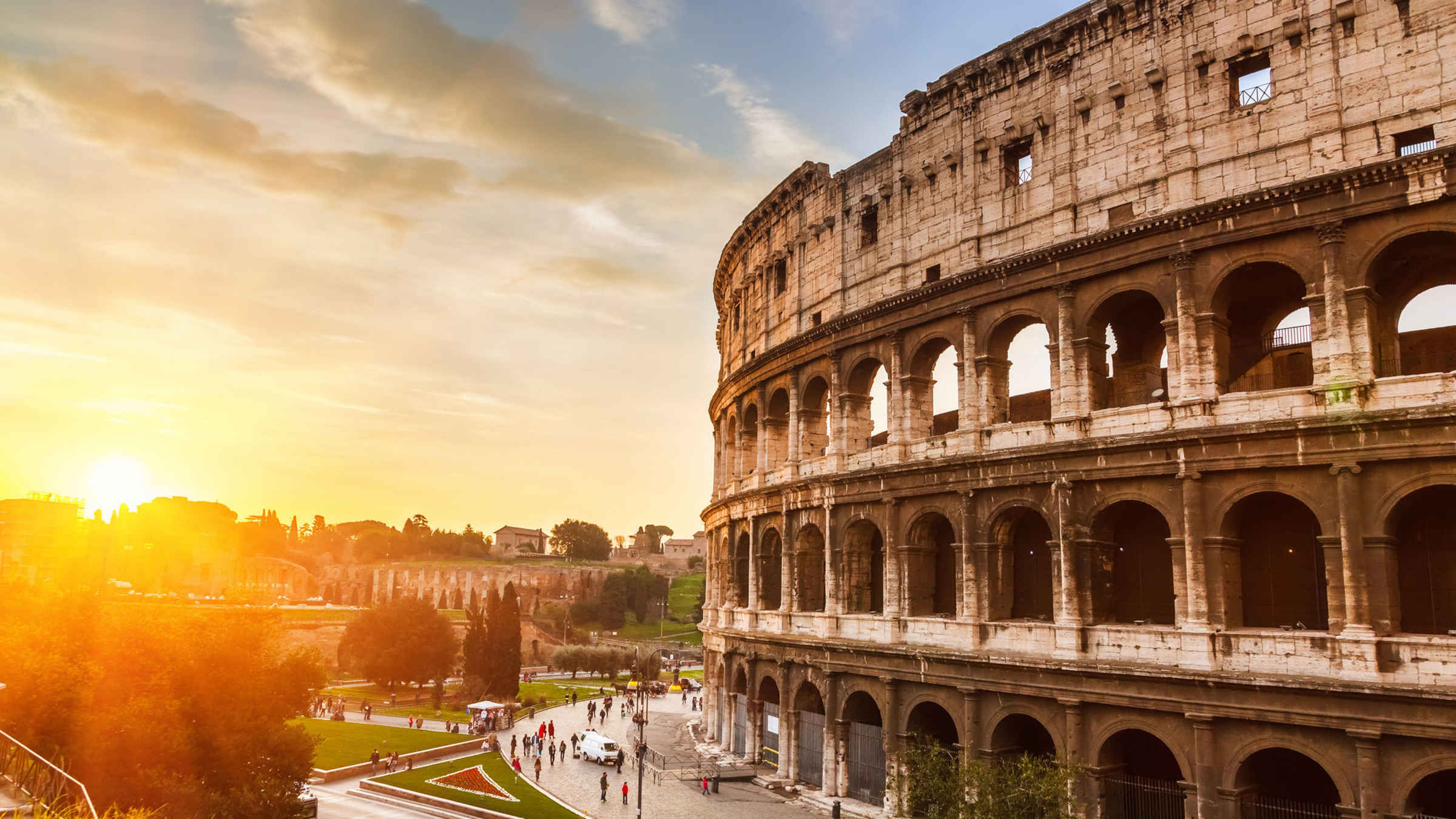Brasov Historical Center
Brasov is one of the most visited cities in Romania, offerings its tourists a rich mix of history, architecture, culture, urban fun and impressive natural surroundings. A top tourist attraction in Romania, the city was for centuries a key commercial center and a strong industrial hub during the long decades of communism when its name changed for 10 years to the City of Stalin.Discover our Brasov Walking Tour. More tours on www.uncover-romania-tours.comBrasov is one of the most visited cities in Romania, offerings its tourists a rich mix of history, architecture, culture, urban fun and impressive natural surroundings. A top tourist attraction in Romania, the city was for centuries a key commercial center and a strong industrial hub during the long decades of communism when its name changed for 10 years to the City of Stalin.BrasovThe Black ChurchThe city of many namesBrasov is the core of the historical Country of Barsei, donated in 1211 by the Hungarian King Andrei the 2nd to the Teutonic Knights who settled the area and founded the city of Brasov a few years later.First documented in writing, in 1235, under the Latin name of Corona, Brasov was also known as Krondstat in German or Brassso in Hungarian. Its strategic location on the commercial route that linked the three Romanian provinces and the Balkans to the Baltic States made it a fast-developing economic center, especially after the second part of the 14th century. Its commercial importance meant also political leverage, acknowledged through its status of a free royal city that empowered the rights of local Saxons.However, Brasov was not spared the destruction caused by the medieval attacks of the Tatars, the Ottomans or the expansion of regional empires. In 1541, Transylvania was proclaimed an autonomous principality under Ottoman control, and more than one century later it was conquered by the Habsburg Empire. Yet, Brasov continued its development under both empires, and – until the Great Union with Romania from 1918 – the local Romanian population enjoyed more freedoms than in most parts of Transylvania.Powered up by the accelerated industrial development during communism, Brasov became the city of Stalin, a city that, nonetheless, found the courage to revolt against the shortages and absurdity of the regime in 1987.Brasov has plenty of attractions to offer and you need at least one full weekend to explore it properly. The medieval sites and the old churches are on the list of every visitor, but Brasov has even more options in store.The Black Church is the most famous medieval monument in Brasov. Over 600 years old, this is the largest hall-church east of Vienna and one of the most impressive Gothic-style buildings from this corner of Europe. The church was seriously damaged by the great fire of 1689 that destroyed much of the city. Its walls were blackened by the flames and the church, originally named Saint Mary, became known as the Black Church.Discover our Brasov Walking Tour. More tours on www.uncover-romania-tours.comBrasov is one of the most visited cities in Romania, offerings its tourists a rich mix of history, architecture, culture, urban fun and impressive natural surroundings. A top tourist attraction in Romania, the city was for centuries a key commercial center and a strong industrial hub during the long decades of communism when its name changed for 10 years to the City of Stalin.BrasovThe Black ChurchThe city of many namesBrasov is the core of the historical Country of Barsei, donated in 1211 by the Hungarian King Andrei the 2nd to the Teutonic Knights who settled the area and founded the city of Brasov a few years later.First documented in writing, in 1235, under the Latin name of Corona, Brasov was also known as Krondstat in German or Brassso in Hungarian. Its strategic location on the commercial route that linked the three Romanian provinces and the Balkans to the Baltic States made it a fast-developing economic center, especially after the second part of the 14th century. Its commercial importance meant also political leverage, acknowledged through its status of a free royal city that empowered the rights of local Saxons.BrasovThe Honterus CourtHowever, Brasov was not spared the destruction caused by the medieval attacks of the Tatars, the Ottomans or the expansion of regional empires. In 1541, Transylvania was proclaimed an autonomous principality under Ottoman control, and more than one century later it was conquered by the Habsburg Empire. Yet, Brasov continued its development under both empires, and – until the Great Union with Romania from 1918 – the local Romanian population enjoyed more freedoms than in most parts of Transylvania.Powered up by the accelerated industrial development during communism, Brasov became the city of Stalin, a city that, nonetheless, found the courage to revolt against the shortages and absurdity of the regime in 1987.Attractions in BrasovBrasov has plenty of attractions to offer and you need at least one full weekend to explore it properly. The medieval sites and the old churches are on the list of every visitor, but Brasov has even more options in store.BrasovView from the fortification wallsMedieval landmarksThe Black Church is the most famous medieval monument in Brasov. Over 600 years old, this is the largest hall-church east of Vienna and one of the most impressive Gothic-style buildings from this corner of Europe. The church was seriously damaged by the great fire of 1689 that destroyed much of the city. Its walls were blackened by the flames and the church, originally named Saint Mary, became known as the Black Church.Black ChurchThe Black ChurchNext to the Black Church, you’ll see the Council Tower, another iconic attraction from the old city center. The headquarters of the court of law back in the 15th century, the Council Tower was restored many times, being used until 1923 as an administrative building. Today, it serves as the Museum of History, offering a panoramic view over the Council Square.Only a short walk from the Council Square, you’ll discover the ruins of the medieval fortifications. Partly demolished during the systematization of the city from the end of the 19th century, the fortification ensemble still conserves a few walls, bastions and towers that partly recreate the image of a medieval well-enclosed and powerful citadel.The existent fortifications border the Lower Walls – the Black Tower, the White Tower and the Graft Bastion – and the Upper Walls – the Weavers’ Bastion, the Drapers’ Bastion, the Red Tanners’ Bastion – from the foothills of Tampa Mountain. The only access gate still preserved from the initial system is the Renaissance-style Ecaterina’s Gate from 1559.Very close to the Upper Walls and the Synagogue, you’ll find one of the narrowest streets in Europe: Sforii Street. With a varying width between 111 and 135 centimeters, this street was originally just a space between two lines of houses. Today, it’s a popular and photogenic tourist attraction.
1 hour • Admission Ticket Free



